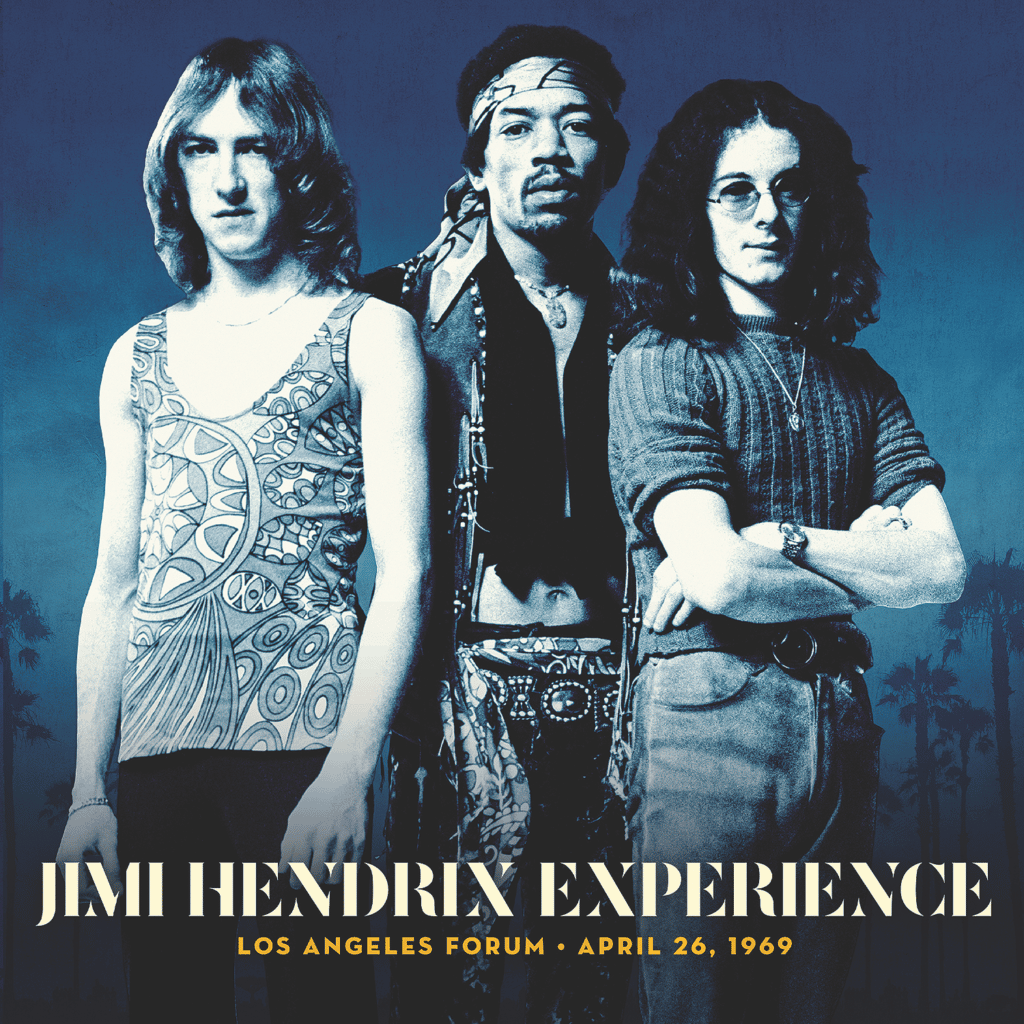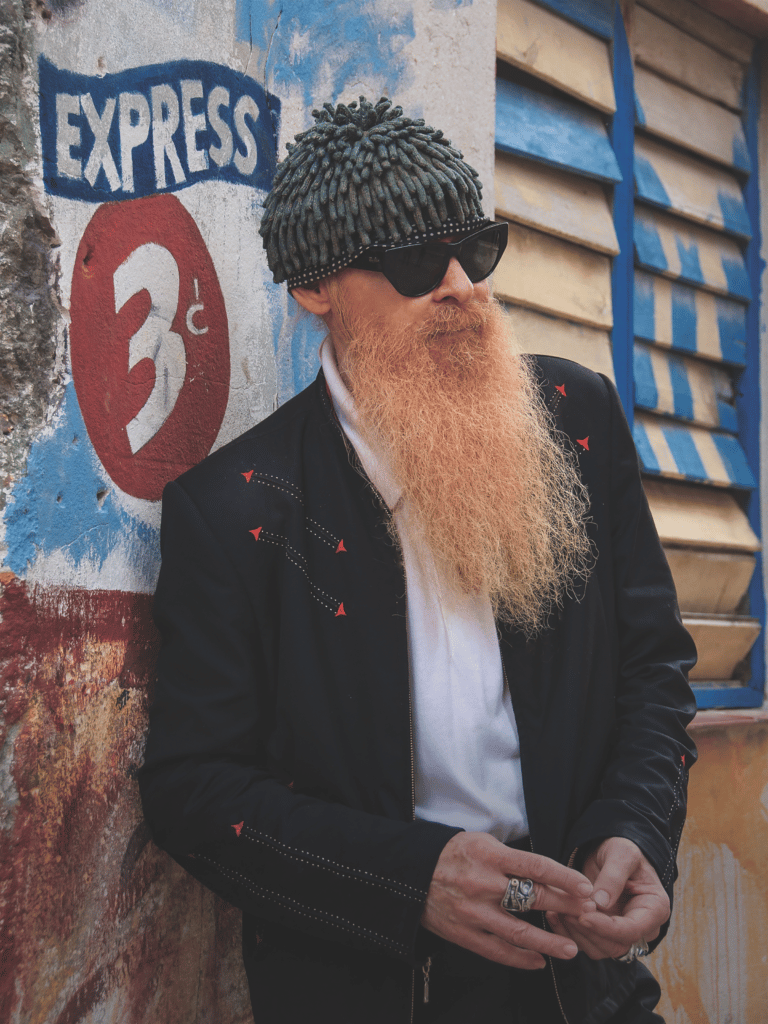Features
Recorded Live: Billy Gibbons Remembers ‘Jimi Hendrix Experience Los Angeles Forum April 26, 1969’
There are moments in music history when everything — era, artist, venue, audience, everything — intersects perfectly.
These are the seminal moments in live. The kind of concerts those in attendance speak about forever. The kind of concerts that seemingly had audiences of hundreds of thousands because they permeate the zeitgeist so much that people believe or dream that they were there, even if they were hundreds or thousands of miles away.
They are the kind of shows people scour bootleg bins for, searching for pressings of illicit recordings.
So picture this if you are looking for these kinds of kismetic intersections: the Jimi Hendrix Experience at what was then simply The Forum in Inglewood, California, on April 26, 1969.
For live music freaks, this show maybe isn’t the Holy Grail, but it’s certainly close to a relic of one of the more important saints.
Finally, a recording of this virtuosic masterclass of psych-freak power blues is available. Sony’s Legacy Recordings imprint released Los Angeles Forum: April 26, 1969 from the Experience Nov. 18 on two-LP vinyl, CD and digitally.
The 11-song set features Hendrix and his bandmates — drummer Mitch Mitchell and bassist Noel Redding — powering through an 11-song set that exceeds any adjectives available in the English language. Rambunctious? Raucous? Powerful? Bravura? Enthralling? None do it justice.
Hendrix prepares the crowd by comparing what was to come to a worship service and perhaps he had the right idea. Both immanent and transcendent, it is 11 pieces that passeth all understanding.
So acataleptic is the performance that “Voodoo Child (Slight Return)” makes a self-contradicting, self-fulfilling prophecy. It’s played and it returns, for sure, but it’s anything but slight.
Among the congregants that spring night more than 50 years ago, in one of those rock ‘n’ roll miracles that seems made up: Billy F. Gibbons, just months before the official formation of ZZ Top.

Courtesy Sony Legacy
Gibbon’s pre-ZZ band, the psychedelic Moving Sidewalks, had opened a few shows for the Experience in 1968 and Gibbons, then a talented teenager, had formed a friendship with Hendrix.
Picture this: Gibbons, having been introduced to the band by a girlfriend who’d picked up the Experience’s albums as English imports, is over the moon at the prospect of opening. What blues-loving teenage guitarist in the late 1960s wouldn’t be? His band’s manager, Gibbons told Pollstar, had never heard of the Jimi Hendrix Experience and was skeptical the Moving Sidewalks would take the gig. Now, being a young band, the Sidewalks didn’t have enough original material to fill out 40 minutes required of an opener, so, like many other bands before and since, dropped a few covers in to fill the time.
“We thought we knew how to play ‘Foxey Lady’ and ‘Purple Haze.’ We closed our set with those two numbers,” he says.
So the first night on the road setting the table for the Experience, either out of cheek or pique or desperation, the Sidewalks stuck to the script, closing with two of the best known songs of the band they were opening for.
“Off the side of the stage, I could see this figure with his arms folded.” Gibbons said. “As we came off the stage, he grabbed me and said ‘I gotta meet you, you got a lot of nerve, I like you.’”
For the rest of the loop, Hendrix, new admirer of Gibbons’ courage or verve (or insanity), made sure the young Texan was nearby.
“He saw to it when we checked into a hotel that I was situated across the hall. It was open doors, the doors never closed. I could wander in. Every stop Jimi had a hi-fi record player. It was the size of a sofa. He had it in his room and I was really taken by the fact that he was asking me how I thought Jeff Beck was doing a particular lick. I said ‘Jimi, Jeff is probably asking how you do licks,’” Gibbons said.
Hendrix’s public persona may have been that of a prodigious wild-man genius — and he was that, no doubt — but Gibbons said he was also a student of the guitar, always wondering how other players did what they did and how he could make the guitar do what he wanted it to do.
“As much as he was learning, he was also inventing. I’m quite confident that the designers and the engineers who came up with the Fender Stratocaster never dreamed it would do the things Jimi Hendrix made it do,” he says, recalling that Hendrix found a secret spot on the instrument’s toggle switch which allowed two different sets of pickups to be activated simultaneously but out-of-phase, producing that ethereal echo effect that became a signature. Eventually, Hendrix determined if he removed the guitar’s pick guard, it was easier to slide the switch into that special spot.
Hendrix’s tinkering and style inspired Gibbons personally, but the Experience demonstrated to him how powerful a power trio could be. Consider that at the time, most every rock band, following the example of The Beatles and the Rolling Stones, were four- or moresomes. In part, because of the lengthy successful career ZZ Top had playing boogie blues as a three-piece, trios are much more common these days. But not then, a fact not lost on Jimi himself.
“Really, at the time, you just had the Jimi Hendrix Experience and Jack Bruce, Ginger Baker and Eric Clapton with Cream,” Gibbons said. “I remember going to the show at The Forum at LA and it was the only third show there — Aretha Franklin had opened it followed by Cream followed by the Jimi Hendrix Experience. We were backstage and Jimi said “We are really putting on the dog, following another trio.”
Hendrix needn’t worry about having to put on airs, of course, as Cream admired him as much as he admired Cream. In a majorly meta moment at the show, Hendrix covered “Sunshine of Your Love,” which was itself inspired by Cream seeing Hendrix in London in 1967.
So how did Gibbons end up at the show in the first place? After the Moving Sidewalks and the Experience parted ways, Gibbons formed ZZ Top with drummer Frank Beard and bassist Dusty Hill early in 1969. By the spring, Gibbons was in Tucson, Arizona, and Mitchell tracked him down, saying that the Experience was playing Detroit but would be in Los Angeles in a couple of days and invited him to the show.
So through the desert Gibbons went, arriving in Southern California in time.
“I remember there was quite a bit of excitement, not only by being in California but knowing that Cream had just folded their tents and the smoke was still lingering in the room. There was a lot of bravery on that stage that night,” he says.

The band had the crowd mesmerized. So much so that the energy of the room caused a stage rush, but Hendrix — who had ratcheted the crowd to such excitement — was able to diffuse a potentially dangerous situation, too, simply telling the invaders and their compatriots to chill out and enjoy the music.
After more than five decades of turning around that memory in his head, Gibbons, now the veteran axman far beyond the plucky picker of 1969, still struggles to describe the show in words.
“I could compare it to learning that sound effect that starts off ‘Foxey Lady.’ I had heard it night after night and it was always a little bit different, but the delivery in LA was extra special. He was letting that rip,” he said “I’ve talked with a few friends of mine that had been there at that fateful night at the Forum. I talked with people who saw him at other venues. It stands as some kind of ineffable, groundbreaking moment.
“It was earth shattering.”